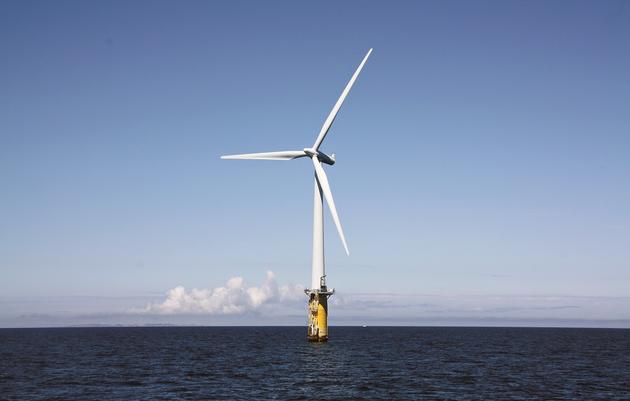(September 23, 2020) Transforming our energy sector to renewables not only saves birds but also benefits people through cleaner air, new jobs and new growing economies in wind and solar development areas.
This September, Audubon re-stated our support for the conditions of the Icebreaker permit that will work to ensure the protection of birds in the Central Basin of Lake Erie, a globally significant Important Bird Area that provides habitat for millions of birds that migrate over the lake.
A Q&A follows:
Q: Why is clean energy a priority for Audubon?
Audubon’s 2019 Climate science reveals that 389 species of our North American birds are seriously threatened by climate change – the severity of that impact depends upon on how fast we can reduce carbon emissions to keep warming below 1.5° Celsius.
Transforming our energy sector to emission-free generation by wind, solar and geothermal energy is a key strategy to combat the effects of climate change on our birds, and a priority for Audubon.
Audubon supports clean energy that is sited and operated properly to avoid, minimize and effectively mitigate the impacts on birds and other wildlife, and the places they need now and in the future.
Working closely with industry, government agencies, partners and our network, Audubon will work to support, expedite and expand the development of clean energy policies, planning and projects to achieve 100% clean energy.
Q: How has Audubon been involved in the Icebreaker Project?
A: In 2017, Audubon – in partnership with Blackbrook Audubon Society, Columbus Audubon Society, Mahoning Valley Audubon Society, Canton Audubon Society and Ohio Ornithological Society – commented on Icebreaker Wind Power pilot project, noting that the project is proposed in a globally significant Audubon Important Bird Area and that the standards set in data collection for siting and operating the project would likely set a precedent for all wind projects proposed in the Great Lakes.
This September, Audubon re-stated our support for the conditions regarding avian issues in the Staff Report and the Revised Joint Stipulations for approval of the Icebreaker permit.
Q: On September 17, the Ohio Sitting Board (OPSB) reversed its decision to require “feathering” or turning off, turbines at night eight months of the year. What is Audubon’s position?
A: At Audubon, our primary goal is to protect birds and the places they need today, and tomorrow.
We support several conditions/provisions of the Icebreaker permit that will work to ensure the protection of birds in this Important Bird Area. These include:
- Construction cannot begin until Ohio Department of Natural Resources (ODNR) has approved the Avian and Bat Impact Mitigation Plan and Collision Monitoring Plan, which will outline efforts to avoid significant impacts to bird and bat species.
- This plan will include language that allows ODNR to feather the turbines if the monitoring technology is ineffective.
- On-site radar studies, to assess the current avian population and determine risks to this population, will be required prior to construction.
- Construction cannot begin until the ODNR has signed off on the adequacy of those studies.
The conditions are all subject to the approval of Ohio Department of Natural Resources, and we are confident that they will make decisions on the project that are in the best interest of our birds.
Q: The project is located in an Audubon Important Bird Area (IBA). How will birds like the Red-breasted Merganser be protected?
A: Birds depend on IBAs, and Audubon is leading the way to protect these iconic places. While IBAs are areas of high conservation value, they are not areas of no development at all. We works to ensure that development in IBAs is for the best interest of birds.
The Lake Erie Central Basin was designated as an IBA primarily because of the population of Red-breasted Mergansers that winter on Lake Erie.
As part of the permit, Audubon requested protocol level surveys for the species and other wintering waterfowl. These surveys have been completed.
We also requested vertical radar studies on nocturnal migrants that cross the lake to tell us the magnitude, timing and altitude of these birds in different weather scenarios. These studies have been embodied in the permit’s conditions with clear criteria for how accurate the data must be.
Data provided from the required studies may show an area that should be avoided, a species that may need protocol level surveys and avoidance, or require higher level of review, minimization or compensatory mitigation measures for the project to continue.





